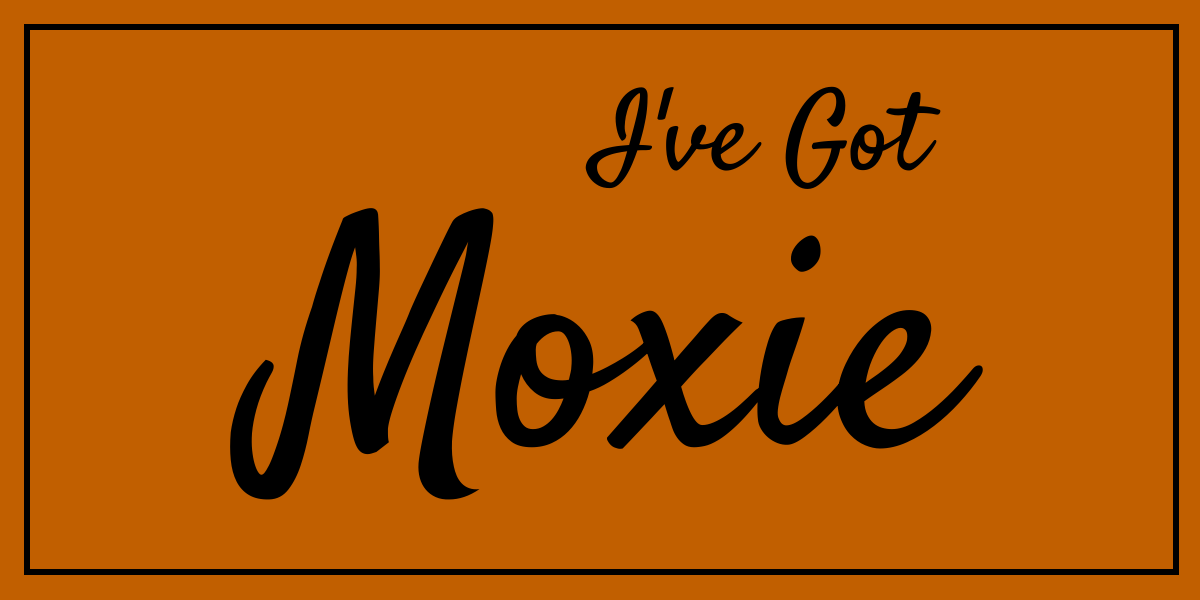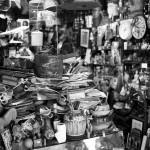I’ve Got Moxie #15: Tidying Up
 Over the past couple of years, there has been a big fuss about Marie Kondo’s book The Life-Changing Magic of Tidying Up: The Japanese Art of Decluttering and Organizing. People seem to be so taken with the thing. Ms. Kondo has also published two other related books: Spark Joy: An Illustrated Master Class on the Art of Organizing and Tidying Up, which just seems to have a lot of pictures on how to fold clothes along with rehashing the original book, and Life-Changing Magic: A Journal – Spark Joy Every Day, which is a journal where you express gratitude for the things that bring you joy. Disclaimer: I have not actually read or had my hands on either one of those.
Over the past couple of years, there has been a big fuss about Marie Kondo’s book The Life-Changing Magic of Tidying Up: The Japanese Art of Decluttering and Organizing. People seem to be so taken with the thing. Ms. Kondo has also published two other related books: Spark Joy: An Illustrated Master Class on the Art of Organizing and Tidying Up, which just seems to have a lot of pictures on how to fold clothes along with rehashing the original book, and Life-Changing Magic: A Journal – Spark Joy Every Day, which is a journal where you express gratitude for the things that bring you joy. Disclaimer: I have not actually read or had my hands on either one of those.
As I have a perpetual problem with clutter, I decided to check Ms. Kondo’s original book out from the library myself and see what the hubbub was all about. Does it contain the magic formula to getting and keeping my house tidy?
Short answer: No.
Long answer: Sort of.
If you are the kind of person with almost no hobbies, or the kind of hobbies that don’t amount to maintaining a cache of supplies, then yes, this process may actually work for you. But in addition to life’s sundries, my life includes several categories of items that just take up a lot of room: homeschooling, family history (many large tubs’ worth), crafts, board games, books, Lego. So, unless my home has a bonus room with enough space to hold all of this “extra”, I’ve failed before I’ve begun, because right now everything in those categories is either useful or beautiful to me, or both.
Which brings me to my assessment of the book.
If you have a clutter problem, I do recommend you read the book. Everyone will likely get something out of it. I can’t tell you what you will get out of it, because everyone’s clutter problems stem from a different place. But it is worth a read. Although…
I wish Ms. Kondo had written it as a pamphlet instead of as a book. It’s a slim volume to start with, and she repeats herself countless times throughout. I could have written the thing in about two pages. But I suppose she wanted to sell copies, so I doubt she’ll complain when I give you my summary of what I got out of the book, because she obviously felt the whole book was necessary for true understanding.
I got four useful and important things out of the book.
- When you’re trying to decide whether to keep something, decide if it sparks joy when you hold it and look at it (though William Morris‘s position resonates more with me: Do not keep anything which you do not find useful or beautiful).
- Has this item fulfilled its role in my life? Has it served its purpose? Would it be better served to go on to someone else now? Could it better benefit someone else?
- Put clothes in your drawers on end instead of stacking them (works best for my shirts, less so for my pants).
- Your space should be set up for the person you are now and life you live now, not who you were in the past or the way you used to live your life.
Fortunately, I read this book before our move earlier this year, and during The Big Purge that went along with packing, I implemented many of these ideas, parting with countless items I never thought I would part with. Numbers 1 and 2 above were the most helpful in that regard.
YMMV, and you’re likely to get different things out of the book than I did. Marie Kondo’s book The Life-Changing Magic of Tidying Up: The Japanese Art of Decluttering and Organizing is worth a read, and it likely will help you with your clutter problems, if you implement some of the ideas. But its overall goal just isn’t practical for people who don’t live a minimalist lifestyle.
Climbing down off my soapbox now.


